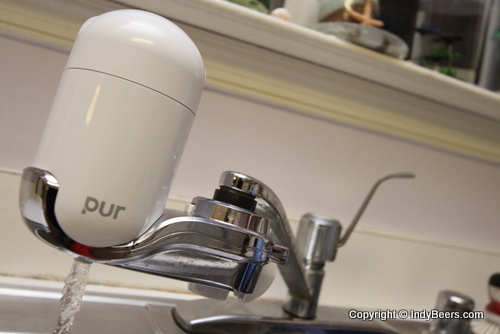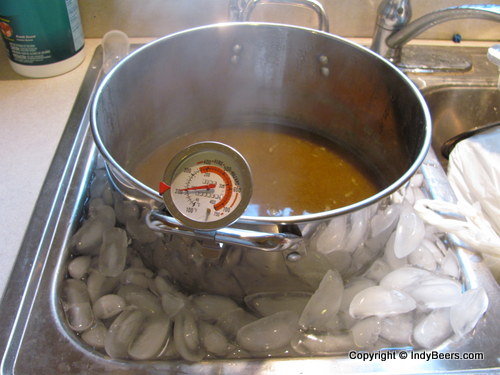
Based my previous post about going green with the wort chilling process I have decided to go as green as I can by letting the wort chill overnight. Robert stated in the comments of the post:
I just put the boiling wort in the fermenter and let it sit till the next morning.
On Reddit, skandalouslsu echoed the thought when stating:
…let it chill over night on its own. That’s what I do. No water. No ice. No pumps. Great tasting beer.
With that in mind, here is how I did the process when I brewed the other night.

After the brewing was done, I added 2 gallons of filtered tap water at the coldest temperature it would come out of the tap. (about 58 degrees)

I put in the cold water first to prevent any issues with adding water that was too hot to the plastic bucket.

For those of you that are curious, this is how I got that last shot. I used a Canon 7D with a wireless flash setup.

I then added the wort, and some more water to get the desired original gravity, put a lid on it, and went to bed.

The next day, I took the yeast out of the refrigerator before I want to work, and then came home at lunch to check on things. The temperature was about right at 68 degrees.

I then pitched the yeast and resealed everything. There was no need to clean or sanitize because nothing new was being touched.
So there it is, the greenest method I came across, and it worked just fine. There was the issue of having to come back to the beer 18 hours later to pitch the yeast, but overall, not bad enough to keep from using this method moving forward. I can tell you that I didn’t miss holding the drill and cleaning the wort chiller!!!


 I have two refrigerators, one that makes ice, and one that doesn’t. This is the ice I use for my wort chiller.
I have two refrigerators, one that makes ice, and one that doesn’t. This is the ice I use for my wort chiller.

















Follow Us!